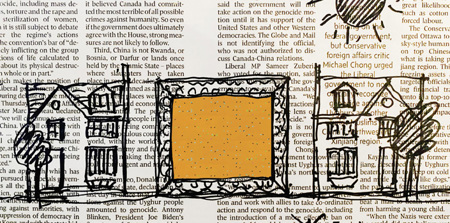

Canvas House
PARTISANS
Inspired by the client’s passion for collecting art, Canvas House took the façade as opportunity to create a sculptural canvas. By prioritizing the possibilities of the resonant form of bricks, Canvas House is organic and orderly, experimenting with materiality and the latest techniques in masonry. The facade's unmodulated pattern, formed by a repeating unit of five bricks, is inspired by Larry Poons' early works. Optics are accomplished by pairing the single-colored brick with individually improvised corbel variations, allowing the design to showcase the brick's ability to encapsulate the elegance of a Georgian home without relying on traditional forms. We attempted to speak to the dimensional qualities present in Poons' work, where his dots seemed to glow and vibrate within the confines of a two-dimensional canvas. We set out to create a façade that featured a sculpted work of art that could convey architectural movement beyond form, through also light. We began experimenting with varying façade options, choreographing brick into a three-dimensional texture. We came up with a new brick-bond for Canvas House, which we call the voxel-bond. Formed by a repeating unit of five bricks, the optics are accomplished by pairing single-colored bricks with individually improvised corbel variations. In the same manner Poons’ flat dots vibrate in two dimensions, the façade of Canvas House moves within three dimensions not only due to the undulating wave, but also through the dints of cast shadows and plays of light. The façade then becomes a performance of form and light creating a theatrical experience every time one enters and exits the home. It transcends its wave-like, three-dimensional form through the participation of light. This is why we call it the voxel-bond, it’s a descendent of a pixel and is indicative of the technological advancements pushing the boundaries of our represented surroundings.